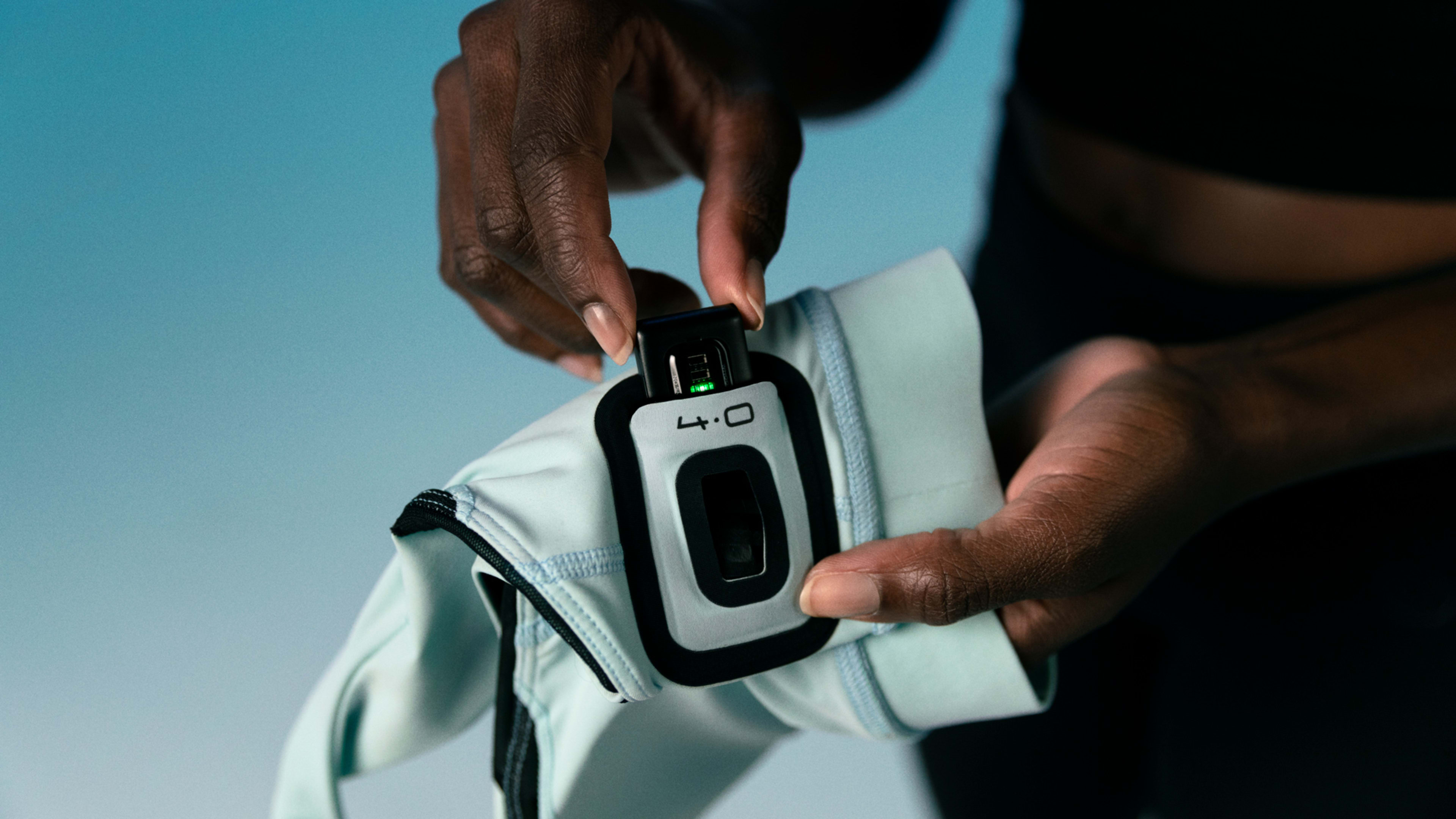Right now, the humble lithium ion battery is one of the biggest bottlenecks in consumer electronics, but a decade-old startup called Sila has taken a big step towards changing that.
Sila enables batteries to use a different kind of chemistry that employs a silicon-based anode instead of graphite, claiming a 20% increase in energy density. Now, the startup is shipping the tech in a fitness band from Whoop, allowing for a design that’s considerably slimmer than before without sacrificing its five-day battery life.
This may not seem like a big whoop (I couldn’t resist), but Sila’s ability to take its tech out of the lab and into an actual product represents a major milestone in the race to create smaller, longer-lasting batteries. For electronics makers, new battery chemistry could free up space for extra features or simply make their devices last longer. Long-term, it could lead to new kinds of electric vehicles or more resilient power grids.

Out with the old
Conventional lithium-ion batteries work by moving charged lithium ions from the anode of the battery to the cathode via an electrolyte. This movement creates electrons that the battery can then discharge, delivering power to your gadgets. Recharging the battery moves the lithium ions back to the anode to repeat the cycle again.

Sila is one of several companies that’s now trying to replace graphite with silicon because of its ability to store more lithium ions in a given space. Last year, Tesla CEO Elon Musk said the company plans to start using silicon-anode batteries in the coming years, and Sila has competition from other firms such as Amprius and NanoGraf.
The problem with silicon is that it swells while charging. This obviously puts stress on the structure of the battery, but it also can invite unwanted reactions with the battery’s electrolyte, limiting the silicon’s ability to retain lithium ions and hold a charge over time.
Sila says it’s created a particle structure that contains the silicon as it expands and uses a rigid outer layer to defend against reactions with the electrolyte. Berdichevsky describes its material as a “black powder,” which battery makers can effectively use as a drop-in replacement for graphite in their existing manufacturing lines.

Still, getting to that point wasn’t easy. Sila still has to manufacture all the silicon anode material that it provides to battery makers, and doing so at scale requires progressively larger reactors. With each increase in reactor size, the company has to make sure every particle is producing exactly the same reaction.
“We went from reactors that were the size of two-liter Coke bottles, to reactors that were the size of a tabletop, to now having reactors that are the size of an office,” Berdichevsky says. “You have to not just have breakthrough science, but you have to scale that breakthrough science, which is really really hard.”
Why Whoop?
Berdichevsky talks confidently about Sila’s ability to replace conventional lithium ion batteries, but that raises the question of why it’s debuting on Whoop. Within the crowded field of fitness wearables, Whoop fills a small niche, providing its hardware exclusively by subscription.
Berdichevsky says that right now, Sila’s 25 megawatt-hour facility can only produce enough material to power a few million consumer electronic devices per year while also handling initial tests for its eventual foray into electric cars. Putting its batteries into mainstream smartphones isn’t yet feasible, so the company needed a partner that was both selling at smaller volumes and willing to take a chance on new battery tech. For Sila’s current capabilities, Berdichevsky says Whoop was the perfect fit.
“They saw the potential,” he says. “They had to take a little bit of a risk on us, and we took a bit of a risk on them, but they’re doing a lot with it.”

For device makers, Berdichevsky says the allure is not so much longer runtime, but room for new features or slicker designs. Batteries are often the largest internal component in consumer electronics; making them smaller would allow for more sophisticated smartphone camera systems, thinner and lighter VR headsets, or more sensor-packed wireless earbuds. Berdichevsky believes those marketing points would be well worth the extra few dollars that device makers would have to spend on the battery.
“We joke that we’re in the real estate business in consumer [technology],” he says. “It’s some of the most expensive real estate in the world in your pocket.”
Long-term, Berdichevsky hopes to bring similar benefits to electric cars. Denser batteries could make heavy-duty trucks more feasible, or they could allow for longer-lasting compact cars in European cities where overnight charging isn’t always possible. Sila also has eyes on power grids, hoping that its batteries could help with energy storage. Zooming out, he speaks of fossil fuels as “single use batteries,” ones that are destined to be replaced by more efficient, rechargeable alternatives.
But to get there, the company will have to prove that it can ship in an actual product, hence his excitement about Whoop.
“If you look back to Sony launching the Handicam and the Walkman with the first lithium ion batteries, it would have been hard to predict that it’s going to kick off a revolution in cars,” he says. “But here we can actually see it happening, because we’re just accelerating an already-happening revolution.”
Recognize your brand’s excellence by applying to this year’s Brands That Matter Awards before the final deadline, June 7.
Sign up for Brands That Matter notifications here.
